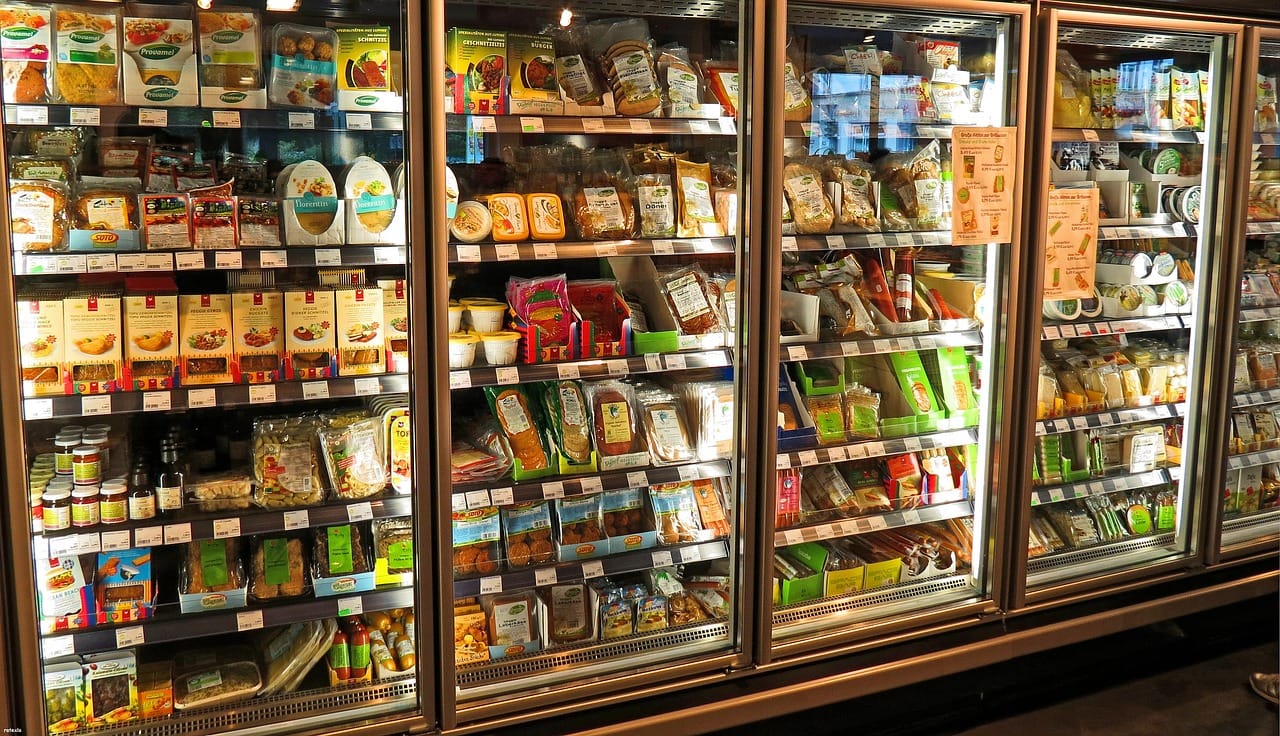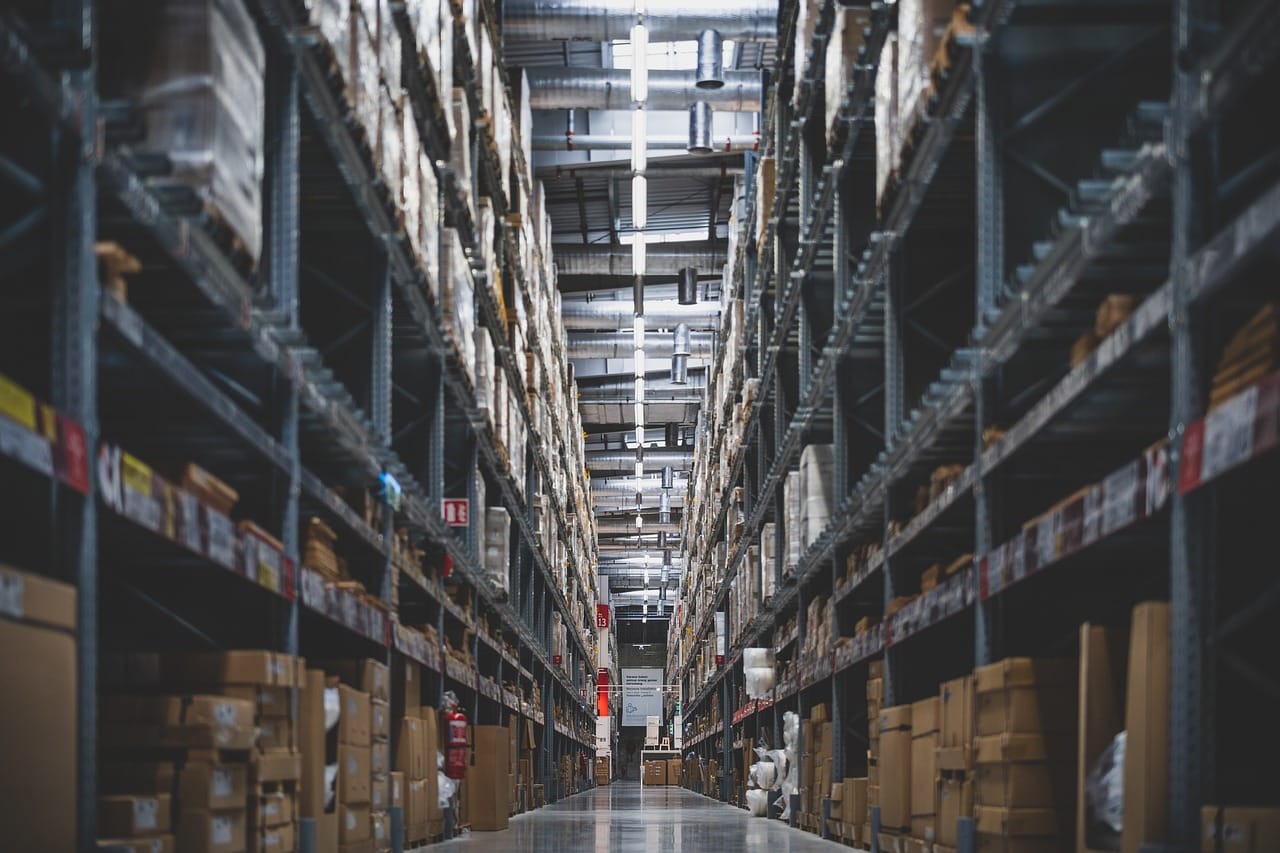Decoding the Unstoppable Rise of E-commerce Growth and Its Implications for Traditional Retailers
Explore the relentless surge of e-commerce and its impact on traditional retailers. Uncover insights into the unstoppable growth shaping the future of retail

In recent years, the retail landscape has undergone a dramatic transformation, with the rise of e-commerce fundamentally reshaping the way consumers shop and businesses operate. This evolution has had a profound impact on traditional retailers, challenging them to adapt to the changing market dynamics or risk being left behind. In this article, I will delve into the unstoppable rise of e-commerce growth and its implications for traditional retailers, exploring the shift from traditional retail to e-commerce, understanding consumer behavior, digital transformation, market disruption, consumer trends, retail innovation, omnichannel retailing, the role of retail technology, supply chain management, enhancing customer experience through digital marketing, adapting business models, and the economic impact and competitive dynamics in e-commerce growth.
The Shift from Traditional Retail to E-commerce
The traditional retail model, characterized by physical stores and face-to-face interactions, has been upended by the explosive growth of e-commerce. The convenience and accessibility of online shopping have revolutionized the way consumers make purchases, leading to a significant shift in buying behavior. With the click of a button, consumers can browse a vast array of products, compare prices, and make purchases from the comfort of their homes. This shift has not only expanded the reach of retailers beyond geographical boundaries but has also redefined the competitive landscape, with online marketplaces and direct-to-consumer brands gaining prominence.
As e-commerce continues to gain momentum, traditional retailers are faced with the challenge of reimagining their business strategies to stay relevant in a digital-first world. Many have embraced omnichannel approaches, integrating their brick-and-mortar stores with online platforms to offer a seamless shopping experience. However, the transition from traditional retail to e-commerce requires careful consideration of inventory management, logistics, and customer engagement to meet the evolving demands of the modern consumer.
The implications of this shift are far-reaching, as the line between online and offline retail blurs, creating a dynamic and interconnected ecosystem where the boundaries of traditional retail are being redefined.
Understanding Consumer Behavior in E-commerce Growth

The unprecedented growth of e-commerce has been driven by a deep understanding of consumer behavior and preferences. Online shopping platforms have leveraged data analytics and consumer insights to personalize the shopping experience, recommend products, and anticipate customer needs. The convenience of tailored recommendations and personalized promotions has played a pivotal role in shaping consumer attitudes towards online shopping, fostering a sense of convenience and value that is challenging to replicate in traditional retail settings.
Furthermore, the proliferation of mobile devices has empowered consumers to browse and make purchases on-the-go, further accelerating the adoption of e-commerce. The seamless integration of payment gateways and secure transactions has instilled confidence in consumers, facilitating a shift towards digital transactions and electronic payments.
As traditional retailers seek to navigate the e-commerce landscape, understanding and leveraging consumer behavior will be instrumental in crafting compelling online experiences and building lasting relationships with customers.
Digital Transformation in the Retail Economy
The rise of e-commerce has catalyzed a widespread digital transformation in the retail economy, prompting businesses to embrace technology in every aspect of their operations. From inventory management and order fulfillment to customer relationship management and marketing, digital solutions have become the cornerstone of modern retail.
Cloud-based platforms, artificial intelligence, and machine learning algorithms have enabled retailers to streamline their processes, optimize supply chain logistics, and gain real-time insights into consumer behavior. The ability to harness data for predictive analysis and demand forecasting has empowered retailers to adapt to changing market trends and consumer preferences with agility and precision.
Moreover, the integration of virtual reality and augmented reality technologies has redefined the concept of the online shopping experience, allowing consumers to visualize products in immersive digital environments before making a purchase. This convergence of technology and retail has blurred the lines between physical and digital commerce, creating new opportunities for engagement and innovation.
As the retail economy continues to undergo digital transformation, traditional retailers are compelled to embrace technological advancements to remain competitive and deliver value in the digital marketplace.
Market Disruption and the Impact on Traditional Retailers
The rapid expansion of e-commerce has brought about significant market disruption, challenging the traditional retail model and prompting a reevaluation of business strategies. The emergence of online marketplaces and direct-to-consumer brands has disrupted established supply chains and distribution networks, reshaping the competitive landscape and presenting new challenges for traditional retailers.
This disruption has been further amplified by the shifting expectations of consumers, who now demand seamless and personalized shopping experiences across online and offline channels. The need for fast and reliable delivery, flexible return policies, and responsive customer service has placed added pressure on traditional retailers to adapt to the evolving market dynamics.
At the same time, the rise of e-commerce has created opportunities for niche players and agile startups to enter the market, leveraging digital platforms to reach global audiences with innovative products and services. This wave of entrepreneurship and creativity has further intensified competition, compelling traditional retailers to differentiate their offerings and explore new avenues for growth.
The impact of market disruption on traditional retailers underscores the imperative for agility and innovation in the face of e-commerce growth, as businesses seek to carve out their place in an increasingly dynamic and competitive marketplace.
Consumer Trends and Shopping Habits in E-commerce
The relentless growth of e-commerce has been shaped by evolving consumer trends and shopping habits, reflecting a fundamental shift in the way people discover, evaluate, and purchase products. The convenience of online shopping has transcended geographical boundaries, enabling consumers to access a global marketplace with unparalleled ease and flexibility.
Moreover, the proliferation of social media and influencer marketing has empowered consumers to discover new products and trends, driving purchase decisions and shaping brand perceptions. The rise of user-generated content and peer recommendations has created a community-driven approach to shopping, where authenticity and social proof play a critical role in influencing consumer behavior.
In addition, the demand for sustainable and ethically sourced products has gained momentum in e-commerce, with consumers seeking transparency and accountability from brands. This shift towards conscious consumerism has prompted retailers to reevaluate their supply chain practices and environmental impact, aligning their offerings with the values and preferences of a socially conscious audience.
Understanding these consumer trends and shopping habits is essential for traditional retailers looking to navigate the e-commerce landscape, as they strive to align their strategies with the evolving needs and expectations of modern consumers.
Retail Innovation and Omnichannel Retailing
The rise of e-commerce has sparked a wave of retail innovation, driving the convergence of online and offline channels to create seamless omnichannel experiences for consumers. Traditional retailers have embraced digital platforms to extend their reach and engage with customers beyond physical storefronts, blurring the boundaries between in-store and online shopping.

Omnichannel retailing has redefined the concept of convenience, allowing consumers to browse, purchase, and return products through a variety of touchpoints, including mobile apps, websites, and physical stores. This integrated approach has transformed the retail landscape, enabling retailers to deliver cohesive and personalized experiences that cater to the individual preferences of each customer.
Moreover, the concept of experiential retail has gained traction in the e-commerce era, as retailers seek to create immersive and interactive environments that go beyond traditional transactional interactions. From virtual fitting rooms to interactive product demonstrations, the integration of technology and physical retail spaces has elevated the shopping experience, fostering a sense of discovery and engagement that transcends the limitations of traditional storefronts.
As traditional retailers embrace omnichannel retailing and innovation, they have the opportunity to redefine their value proposition and create compelling experiences that resonate with the modern consumer.
The Role of Retail Technology in E-commerce Growth
Retail technology has emerged as a driving force behind the exponential growth of e-commerce, empowering businesses to optimize their operations and deliver enhanced experiences to consumers. The adoption of advanced analytics and data-driven insights has enabled retailers to gain a comprehensive understanding of consumer behavior, enabling them to tailor their offerings and marketing strategies to meet evolving demands.
Furthermore, the integration of artificial intelligence and machine learning has revolutionized the way retailers engage with customers, enabling personalized recommendations, chatbots for customer service, and predictive inventory management. These technological advancements have not only improved operational efficiency but have also elevated the level of personalization and customization available to consumers, fostering loyalty and long-term relationships.
In addition, the seamless integration of retail technology has enhanced the security and transparency of online transactions, instilling confidence in consumers and mitigating concerns around data privacy and fraud. This emphasis on trust and reliability has been instrumental in driving the widespread adoption of e-commerce, creating a secure and trustworthy environment for consumers to engage in online shopping.
As the role of retail technology continues to evolve, traditional retailers must embrace innovation and invest in technological solutions to remain competitive and relevant in the dynamic e-commerce landscape.
Supply Chain Management and E-commerce
The exponential growth of e-commerce has placed unprecedented demands on supply chain management, compelling retailers to rethink their logistical strategies and operational processes. The need for efficient order fulfillment, inventory visibility, and last-mile delivery has become increasingly critical in meeting the expectations of consumers for fast and reliable service.
The integration of advanced supply chain technologies, such as real-time tracking, inventory optimization algorithms, and automated warehousing systems, has enabled retailers to streamline their operations and adapt to the complexities of e-commerce logistics. These advancements have not only improved the speed and accuracy of order processing but have also enhanced the resilience of supply chains in the face of unforeseen disruptions.
Moreover, the emphasis on sustainability and ethical sourcing has prompted retailers to reevaluate their supply chain practices, seeking transparency and accountability from suppliers to meet the evolving expectations of socially conscious consumers. This shift towards responsible supply chain management has reshaped the way products are sourced, manufactured, and distributed, aligning retail operations with the values and principles of a global audience.
As traditional retailers navigate the challenges of supply chain management in e-commerce, the adoption of innovative technologies and sustainable practices will be instrumental in ensuring operational efficiency and meeting the demands of a rapidly evolving marketplace.
Enhancing Customer Experience through Digital Marketing
The evolution of e-commerce has redefined the landscape of digital marketing, offering retailers unprecedented opportunities to engage with consumers and build lasting relationships. From targeted advertising and personalized promotions to influencer partnerships and content marketing, digital channels have become essential tools for retailers to connect with their audience and drive brand awareness.
The power of social media platforms and online communities has enabled retailers to create immersive and interactive experiences, fostering a sense of community and belonging among consumers. User-generated content and social endorsements have proven to be influential in shaping brand perception and driving purchase decisions, amplifying the impact of digital marketing in the e-commerce ecosystem.
Furthermore, the integration of data analytics and customer relationship management has empowered retailers to gain actionable insights into consumer behavior, enabling them to tailor their marketing strategies and communication touchpoints with precision and relevance. This personalized approach to digital marketing has not only elevated the customer experience but has also contributed to the long-term loyalty and advocacy of consumers.
As traditional retailers embrace the potential of digital marketing in e-commerce, they have the opportunity to create compelling narratives and experiences that resonate with their audience, driving engagement and loyalty in an increasingly competitive digital marketplace.
Adapting Business Models in the Evolving Retail Sector
The relentless growth of e-commerce has necessitated a fundamental reevaluation of traditional business models, prompting retailers to adapt to the evolving dynamics of the retail sector. The shift towards direct-to-consumer models, subscription services, and online marketplaces has redefined the concept of retail, challenging established norms and opening up new avenues for growth and innovation.
In addition, the emergence of platform-based business models has enabled retailers to extend their reach and access new markets with unprecedented ease, leveraging the power of digital platforms to connect with global audiences. This democratization of access has leveled the playing field for businesses of all sizes, fostering a vibrant and diverse ecosystem of retailers and entrepreneurs.
Moreover, the emphasis on sustainability and ethical business practices has driven the integration of purpose-driven models, where social and environmental impact is prioritized alongside financial performance. This focus on responsible business has resonated with consumers, shaping their purchasing decisions and brand preferences, and prompting retailers to align their business models with the values and aspirations of a socially conscious audience.
As traditional retailers navigate the evolving retail sector, the ability to adapt and innovate their business models will be instrumental in seizing the opportunities presented by e-commerce growth and defining their place in the future of retail.
Economic Impact and Competitive Dynamics in E-commerce Growth
The unstoppable rise of e-commerce has had a profound economic impact, reshaping the competitive dynamics of the retail industry and influencing consumer spending patterns. The shift towards online shopping has not only accelerated the digitalization of the economy but has also created new employment opportunities and entrepreneurial ventures, driving innovation and diversity in the marketplace.
The democratization of access to global markets has empowered small and medium-sized businesses to thrive in the e-commerce landscape, enabling them to showcase their products and compete on a level playing field with established retailers. This democratization of access has fostered a vibrant and dynamic marketplace, where agility and innovation are celebrated, and consumer choice is expanded.
Furthermore, the rise of e-commerce has prompted traditional retailers to reimagine their value proposition and differentiation strategies, as they seek to carve out their place in an increasingly competitive environment. The need for agility, responsiveness, and consumer-centric approaches has become paramount in navigating the economic impact of e-commerce growth and sustaining relevance in the evolving retail landscape.
As the competitive dynamics of e-commerce continue to evolve, traditional retailers must embrace innovation, collaboration, and adaptability to thrive in a digital-first economy, leveraging the economic opportunities presented by the unstoppable rise of e-commerce.
In conclusion, the unstoppable rise of e-commerce growth has reshaped the retail landscape, presenting both challenges and opportunities for traditional retailers. The shift from traditional retail to e-commerce has redefined consumer behavior, shopping habits, and market dynamics, compelling businesses to adapt to the digital marketplace or risk being left behind. Understanding the implications of e-commerce growth on the retail economy, supply chain management, customer experience, and competitive dynamics is essential for traditional retailers to navigate the evolving landscape and thrive in the era of digital commerce.
As the evolution of retail continues, the convergence of technology, innovation, and consumer-centric strategies will shape the future of retail, driving the transformation of business models and economic dynamics. The unstoppable rise of e-commerce growth underscores the imperative for traditional retailers to embrace digital transformation, enhance their omnichannel capabilities, and leverage retail technology to deliver compelling experiences and value to modern consumers. By adapting to the evolving retail sector and embracing the economic opportunities presented by e-commerce growth, traditional retailers can position themselves for success in an era defined by digital innovation and consumer empowerment




